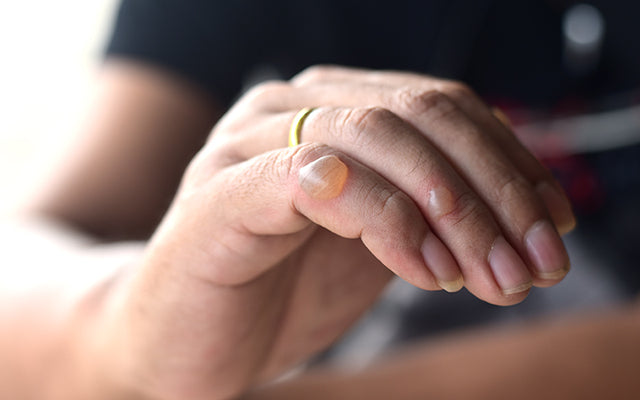You must be familiar with the bubble-like lesion that pops up on the skin when you touch a hot surface or after you have worn a new shoe for the very first time. While common blisters are not a serious problem and heal by themselves if not disturbed, some blisters can be very painful, especially when pricked or broken.
But did you know that certain medical conditions can also lead to blistering of the skin? Read on to know what blisters are, the common causes of blistering and how to treat them.
Highlights:
What Are Blisters?
Blisters are raised pockets of fluid formed on the outermost layer of the skin in response to skin damage, injury or infection. Depending on the cause, the fluid inside blisters can be blood, plasma, serum or pus.
The formation of blisters gives a cushioning effect that protects the underlying tissue from further damage and lets it heal. Blisters can appear as a single bubble or in clusters. They can be itchy or painful. Blisters filled with serum are also called water blisters.
Types Of Blisters
Based on their size, blisters can be categorised into the following types:
- Vesicles - Blisters that are small, typically less than 5mm in size.
- Bulla (plural- bullae)- A blister larger than 5mm with thin walls.
Breaking of the roof of the blister and release of the fluid within may lead to the formation of a crust.[1]
Depending on the cause, blisters can be classified as:
- Friction blisters
- Blood Blisters
- Heat Blisters
Blisters can also be named after the disease that caused them. For example eczema blisters or chicken pox blisters.
Causes Of Blisters On Skin
The most common type of blisters are caused by mechanical injury to the skin. A few causes of blisters are:
1. Friction
Friction blisters are common in people who perform heavy work such as using heavy tools or playing rigorous sports. Constant rubbing of the skin due to ill-fitted shoes or handheld equipment can cause blisters on feet and hands respectively. Moisture or sweat can increase the chances of friction blisters.
2. Heat
If the skin comes in contact with an extremely hot surface or steam, the burn can cause blisters. Severe sunburns can also have the same effect.
3. Cold
Extreme cold temperatures that can cause frostbite on your fingers and toes, can trigger blistering of skin as well.
4. Chemicals
Exposure to chemicals such as ammonia, bleaching agents, liquid nitrogen, mustard gas etc. can cause blisters.
5. Insect Bites
Bites of certain insects such as bed bugs, scabies mites, midges, gnats, etc. leads to the formation of itchy fluid-filled blisters.

6. Infections
Certain bacterial and viral infections cause blisters on the skin. Some examples include-
1. Chicken pox
2. Cold sores
3. Shingles
4. Herpes simplex viruses
5. Hand, foot and mouth disease
6. Impetigo
7. Erysipelas caused by Streptococcus
7. Autoimmune Blistering Diseases
These are a group of diseases that occur when the body’s own immune system attacks the skin and mucous membranes, causing painful blisters. These blisters take a lot of time to heal and may also leave scars. Although it is more prevalent in people above 50 years, it can affect people of all age groups.[2]
Different types of autoimmune blistering diseases include:
A. Pemphigus
It causes sores on the mouth, nose, throat, eyes, scalp, genitals, etc. For example, pemphigus vulgaris, pemphigus foliaceus.
B. Pemphigoid
It affects skin and mucous membranes. Examples are bullous pemphigoid, gestational pemphigoid, etc.
C. Ig-A Mediated Bullous Dermatoses
An excess of IgA antibody produced by the immune system mistakenly attacks the skin and mucous membranes. This can be of 2 types, dermatitis herpetiformis and linear IgA dermatosis.
D. Epidermolysis Bullosa Acquisita
This disorder makes the skin fragile and prone to blistering even due to minor injuries. It is mostly inherited.
E. Dyshidrotic Eczema
Also known as pompholyx, it causes severely itchy blisters on hands and feet. Flare-ups may be triggered by metals like nickel, cobalt, personal care products such as soaps, shampoos, etc.[3]
How Do You Treat Skin Blisters?
Most common blisters heal by themselves if left alone for a week or two. It is best not to puncture a blister as it may lead to an infection.[4] As blisters heal, the fluid inside is reabsorbed into the underlying tissue and the top skin dries and falls off. You should not pull the dry top skin.
While healing, you can protect the blister with a loose bandage that is a little raised in the middle. If there is a lot of pain or secretion from the blisters, consult a doctor. Use medications, if necessary, to prevent further complications.
In some cases, it may be necessary to drain a blister that has become too large or painful. Utmost care should be taken to keep the area clean and protected to avoid infection.
For blisters caused by severe burns, infections or autoimmune disorders, consult a doctor at the earliest. Treating of the underlying cause will help heal the blisters.
Tips For Prevention Of Blisters
Use padding with a hole in the middle to avoid chafing or pressure on a particular area of the skin. Use protective clothing such as gloves, socks,etc. to prevent friction blisters.
1. Avoid the activities causing blisters till they heal completely.
2. Keep the areas prone to blisters clean and dry. For example, you can use talcum powder on your hands and feet to prevent blisters.
3. To avoid blisters due to autoimmune disorders, try to avoid the triggers that cause flare-ups.
Wrapping Up
Blisters are a part of the skin’s coping mechanism to deal with damages due to burns, injuries, etc. Blisters can be caused by mechanical injury, infections or autoimmune disorders. Most common blisters are harmless and heal by themselves. However, if your blisters are persistent, painful, or oozing blood or pus, consult a doctor immediately.
Recommended Products
Was this Article helpful?
- Least helpful
- Most helpful





